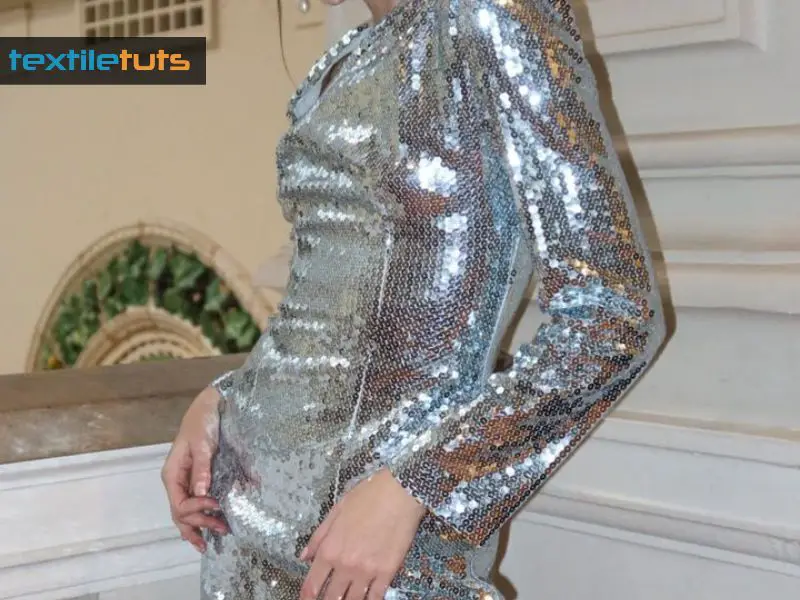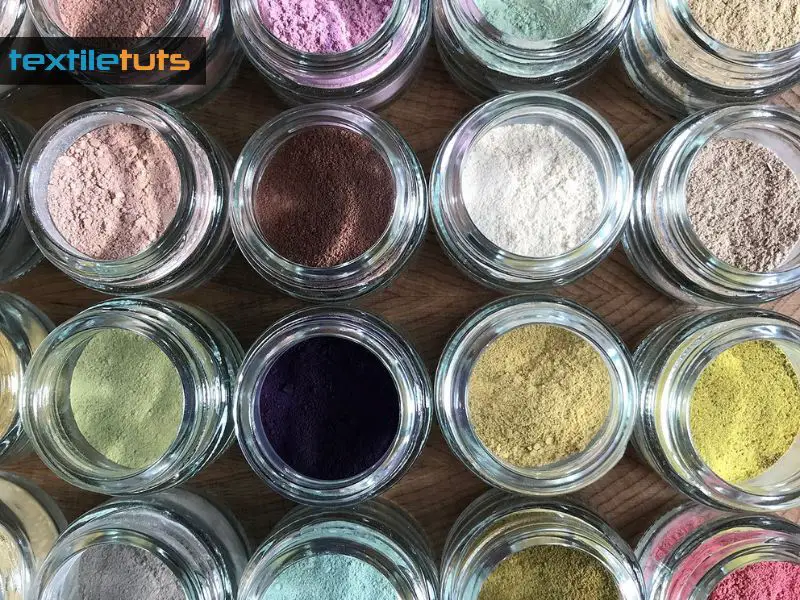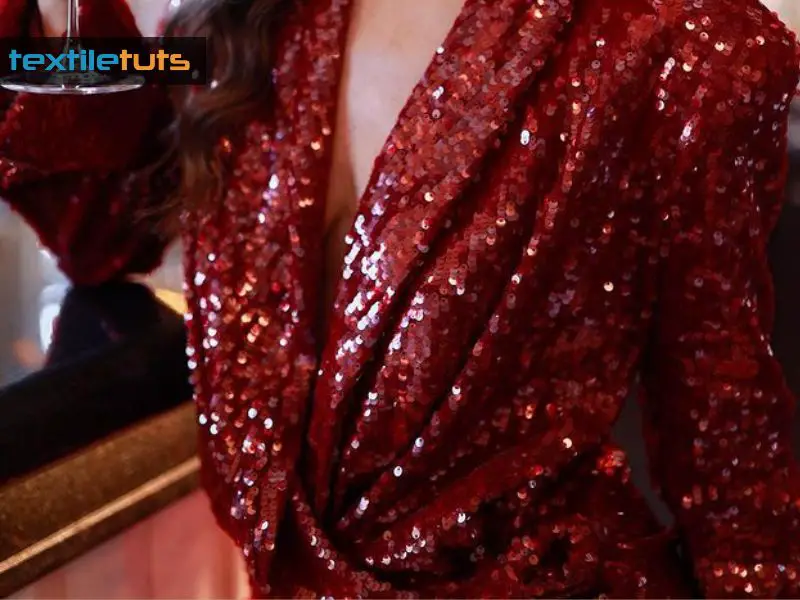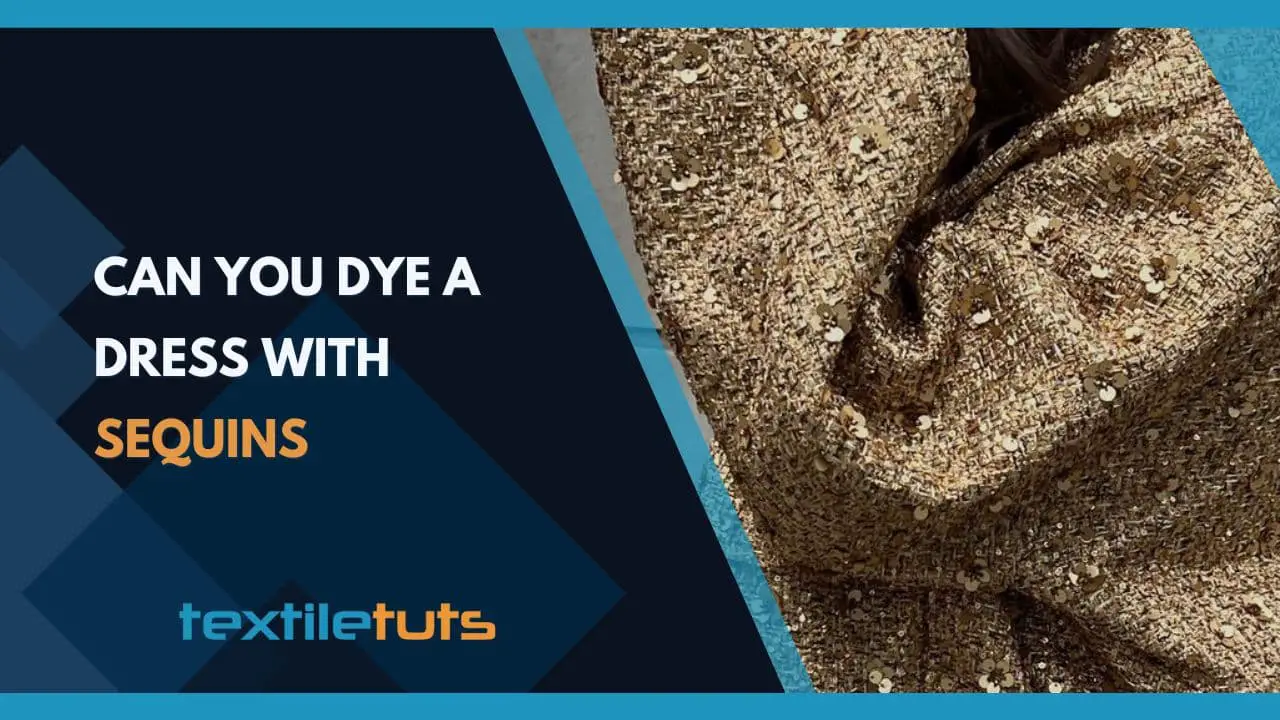Can You Dye A Dress With Sequins? Ultimate Guide to Dyeing Sequin Dresses
In fashion, versatility is key, and nothing screams personalized style like a custom-colored garment. However, when it comes to dresses with sequins, many fear damaging their beloved sparkly outfit in the dyeing process. Are you looking to give your sequined dress a fresh, new look?
You can dye a dress with sequins, but it requires careful consideration of the sequins’ material. Sequins made from natural materials like silk can be dyed, while plastic sequins might not hold the dye well and could melt if a hot dyeing process is used.
In this guide, I’ll explore the intricate world of fabric dyeing, specifically answering the burning question: “Can you dye a dress with sequins?” If you’re a fashion-forward DIY enthusiast or just looking to revamp an old favorite, let’s dive into the dos and don’ts of coloring your sequined attire.
Dyeing a Dress with Sequins- Is It Possible?
Dyeing a dress with sequins can be a challenging endeavor due to the properties of the materials involved. Generally, sequins are made of plastic or metal, and they do not absorb dye the same way fabrics do.

If the dress in question is made from a natural fiber like cotton, silk, or wool, it is indeed possible to dye the base fabric. Still, the sequins themselves may not take on the new color—and there’s a risk they could become discolored or damaged during the dyeing process.
To dye a sequined dress, use a dye that is suitable for the fabric of the dress and gentle enough not to harm the sequins. Synthetics like polyester, which many sequined dresses are made from, require special types of dye and dyeing conditions, such as high heat, which may not be compatible with the attached sequins.
Some sequins may be coated with a color that resists change, while others could potentially melt or warp under high heat.
If you decide to proceed, I recommend using cold water dye and following the instructions closely, opting for hand dyeing rather than a washing machine to minimize agitation.
Pre-Dyeing Considerations for Sequined Dresses
When dyeing sequined dresses, there are several important considerations to keep in mind to achieve the best possible outcome without damaging the dress or the sequins. Here are some pre-dyeing considerations to follow:
Fabric Compatibility
Not all fabrics or sequins can be dyed successfully. Check the dress’s fabric composition and the material of the sequins. Natural fibers like cotton, silk, and wool typically dye better than synthetics like polyester, which most sequins are made of.
If a dress has sensitive or non-dyeable material, it may not be a good candidate for dyeing.
Sequin Material
Sequins are often made of plastic and are, therefore, not receptive to traditional fabric dyes. Knowing the composition of the sequins is vital. Metallic sequins, for example, may not tolerate the dyeing process, and heat can cause plastic sequins to warp or melt.
Color Choice and Dye Type
Darker sequins cannot be dyed into lighter shades. Similarly, the choice of dye is crucial. Acid dyes may work on some sequins, whereas others may require dispersion dyes.
The fabric of the dress will also affect the choice of dye. Always select a dye that is appropriate for both the sequins and the fabric.
Dye Penetration and Coverage
Consider whether the dye will penetrate and cover uniformly. Sequins can create uneven patterns or resist dye, which could result in a splotchy or inconsistent color.
Testing
Conduct small-scale tests to see how the dye interacts with the sequin and fabric. Use a hidden section of the dress or spare sequins if available. Testing helps in avoiding unwanted surprises and allows you to adjust the dyeing process accordingly.
Sequin Attachment and Condition
Examine how the sequins are affixed to the fabric. If they are glued, the adhesive may dissolve or weaken in the dye bath. Sewn-on sequins are more likely to stay in place but inspect the thread for dye compatibility.
Check the condition of the sequins as well. Damaged or loose sequins may need to be removed or secured before dyeing.
Cleaning and Preparation
The dress should be clean and free from oils, dirt, and finishes, as these can affect dye uptake. Pre-wash the dress if necessary, following care instructions to avoid damage.
Shrinkage and Fit
Be aware that dyeing can cause some fabrics to shrink. If the dress is already a precise fit, this potential shrinkage must be considered. It may be prudent to accommodate possible size changes or avoid dyeing altogether.
Professional Consultation
Dyeing a sequined dress may require professional expertise. Consulting with a professional dyer can provide insights into the best practices for dyeing, taking into account the specific materials and construction of the dress.
Choosing the Right Dye for Your Sequined Dress
Choosing the right dye for a sequined dress can be a bit challenging because sequins are often made from various materials, and not all dyes work well with every type of material.

Besides, the fabric of the dress itself also plays a crucial role in determining the appropriate dye. Here are some general tips to help you choose the right dye for your sequined dress:
Fabric Type
Identify the fabric of your dress. Common fabrics include silk, satin, polyester, or a blend of materials. Different fabrics react differently to dyes, so it’s essential to choose a dye that is suitable for the specific material.
Sequin Material
Sequins can be made of plastic, metal, or other materials. Some dyes may not adhere well to certain types of sequins. So, perform a small test on an inconspicuous area to check how the sequins react to the dye.
Dye Type
Fabric dyes come in various types, including acid dyes, fiber-reactive dyes, and all-purpose dyes.
Consider the compatibility of the dye with the fabric and sequin material. Some dyes may work better on natural fibers, while others are more suitable for synthetics.
Color Matching
Ensure the dye you choose comes in the color you desire. If you want to change the color of the dress, be mindful of the original color and how it might affect the final result.
Consider Professional Help
If you’re unsure about the type of sequins or fabric in your dress, or if you’re not confident in your dyeing skills, consider seeking professional help. Some dry cleaners or textile professionals offer dyeing services.
Step-By-Step Guide to Dyeing Your Sequined Dress
Dyeing a sequined dress requires careful attention to detail to prevent damaging the delicate sequins. Follow this step-by-step guide to ensure your dress gets a stunning and even new hue while keeping its sparkle intact.
Step 1: Choose the Right Dye
- Fabric Consideration: Check the fabric tag on your dress. Most sequins are attached to a base fabric made of silk, cotton, or synthetics like polyester. The base fabric is what will absorb the dye.
- Dye Selection: Opt for a dye that works with the dress’s base fabric. For example, use acid dye for silk and nylon, all-purpose dye for cotton, and polyester dye for synthetic materials.
- Color: Select a color that will mix well with the current shade of your dress unless you’re going for a completely bold transformation.
Step 2: Prepare Your Work Area
- Safety Measures: Wear rubber gloves and an apron to protect your skin and clothing.
- Protect Surfaces: Cover any surfaces with plastic sheets or old towels to prevent staining.
- Utensils: Use a stainless steel pot for the dye bath, as well as stainless steel spoons or tongs for stirring and handling the dress.
Step 3: Pre-Dye Treatment
- Cleaning: Wash your dress to remove any oils, dirt, or finishes that may interfere with dye uptake. Make sure it is clean and damp before dyeing.
- Sequin Protection: While sequins don’t dye, they can warp or melt under high heat. Turn your dress inside out to minimize direct exposure.
Step 4: Mix Your Dye Bath
- Instructions: Follow the dye package instructions carefully. This typically involves dissolving dye in hot water.
- Stir: Make sure the dye is well mixed and completely dissolved in the water to avoid uneven coloring.
- –Temperature: Heat the dye bath to the recommended temperature for your fabric type, but be cautious not to exceed temperatures that could damage the sequins.
Step 5: Dyeing Process
- Immersion: Gently lower your dress into the dye bath. Keep it moving to promote even dyeing and prevent the sequins from sticking together.
- Duration: Leave your dress in the dye bath for the time specified by the dye manufacturer. Regularly move and turn the dress to ensure even coverage.
- Rinsing: Once the desired color is achieved, carefully rinse the dress in lukewarm water, gradually decreasing the temperature until it runs clear.
Step 6: Post-Dye Treatment
- Drying: Avoid wringing the dress as it may damage the sequins. Instead, press out excess water gently between towels or let it drip dry on a hanger.
- Set Color: To set the color and prevent bleeding, consider using a color fixative suitable for the dye and fabric type.
Step 7: Caring for Your Dyed Sequined Dress
- Wash Carefully: Hand wash your newly dyed dress gently or opt for dry cleaning if the fabric requires it.
- Storage: Store the dress away from direct sunlight to avoid fading and keep it hung to prevent wrinkles in the sequins.
Aftercare and Maintenance of Your Newly Dyed Sequined Dress
Caring for a newly dyed sequined dress requires meticulous attention to detail to ensure that the color stays vibrant and the embellishments remain intact. Improper handling can lead to faded colors and dislodged sequins, which can ruin your dress’s appearance.

Below are guidelines for aftercare and maintenance to help your garment maintain its sparkle and color for as long as possible.
Initial Care Post-Dyeing
- Inspect the Dress: Carefully examine your sequined dress after the dyeing process. Check for any color inconsistencies or areas where sequins may have come loose or been damaged.
- Ventilation: Post-dye, ensure the dress is kept in a well-ventilated area away from direct sunlight to air out any chemical smells and to allow the fabric and sequins to dry thoroughly if needed.
Cleaning Instructions
- Spot Cleaning: If your dress requires cleaning, try spot cleaning first. Use a gentle, color-safe cleaner and apply it to the affected area with a soft cloth. Avoid rubbing the sequins directly, as this could cause damage.
- Dry Cleaning: For full cleaning, I generally recommend taking your sequined dress to a professional dry cleaner experienced in handling dyed and embellished garments. They will have the expertise and proper solvents to clean it without causing harm.
- Avoid Water: Sequins, especially when attached to delicate fabrics, can become disfigured or detached when soaked in water. Try to keep your dress as dry as possible.
Drying Your Dress
- Air Dry: Always air-dry your dress by laying it flat on a clean towel. Hanging a sequined dress while it dries can cause the fabric to stretch due to the weight of the sequins, especially when wet.
- Avoid Heat: Keep your dress away from direct heat sources like sunlight, radiators, or hairdryers. Heat can cause shrinkage and can melt or warp sequins.
Ironing or Steaming
- Use Low Heat: If your dress requires ironing, set your iron to the lowest heat setting and place a pressing cloth between the iron and the fabric to protect the sequins.
- Steam Carefully: Steaming can be a safer option for removing wrinkles from delicate fabrics. However, avoid steaming the sequined areas directly, as the heat and moisture can damage them.
Storage Techniques
- Hang or Fold Properly: If hanging your sequined dress, use a padded hanger to prevent stretching and preserve the shape of the garment. If folding, place tissue paper between the folds to prevent the sequins from catching on each other.
- Avoid Compression: Store your dress in a place where it will not be compressed or crushed by other garments or objects, as this can cause sequins to come off or imprint marks onto the fabric.
- Garment Bag: Consider storing your dress in a breathable garment bag to protect it from dust and other potential damages while allowing air circulation.
Regular Maintenance
- Sequin Checks: Before and after wearing the dress, check for loose or missing sequins. Repair any areas where the sequins are loose to prevent further loss or damage.
- Refresh the Color: If you notice the color of your dress fading over time, you might consider another round of dyeing. Always refer back to the professional who originally dyed the dress or consult with a fabric dyeing expert for advice.
Conclusion
You can dye a dress with sequins, but the process can be difficult and may result in a less-than-desirable outcome. Sequins are often made with materials that do not hold dye well, and the process can be messy and time-consuming. The process can be tricky and may result in damage to the sequins or uneven coloring.
If you are set on changing the color of your dress, it is possible with the right techniques and materials. Whether you choose to use fabric dye or fabric spray, carefully remove any loose or excess sequins and follow the instructions for the dyeing process.
With patience and attention to detail, you can successfully dye a dress with sequins and give it a whole new look. I always recommend testing a small area first and consult with a professional if needed. So go ahead and experiment with colors on your sequin dress and make it uniquely yours!

